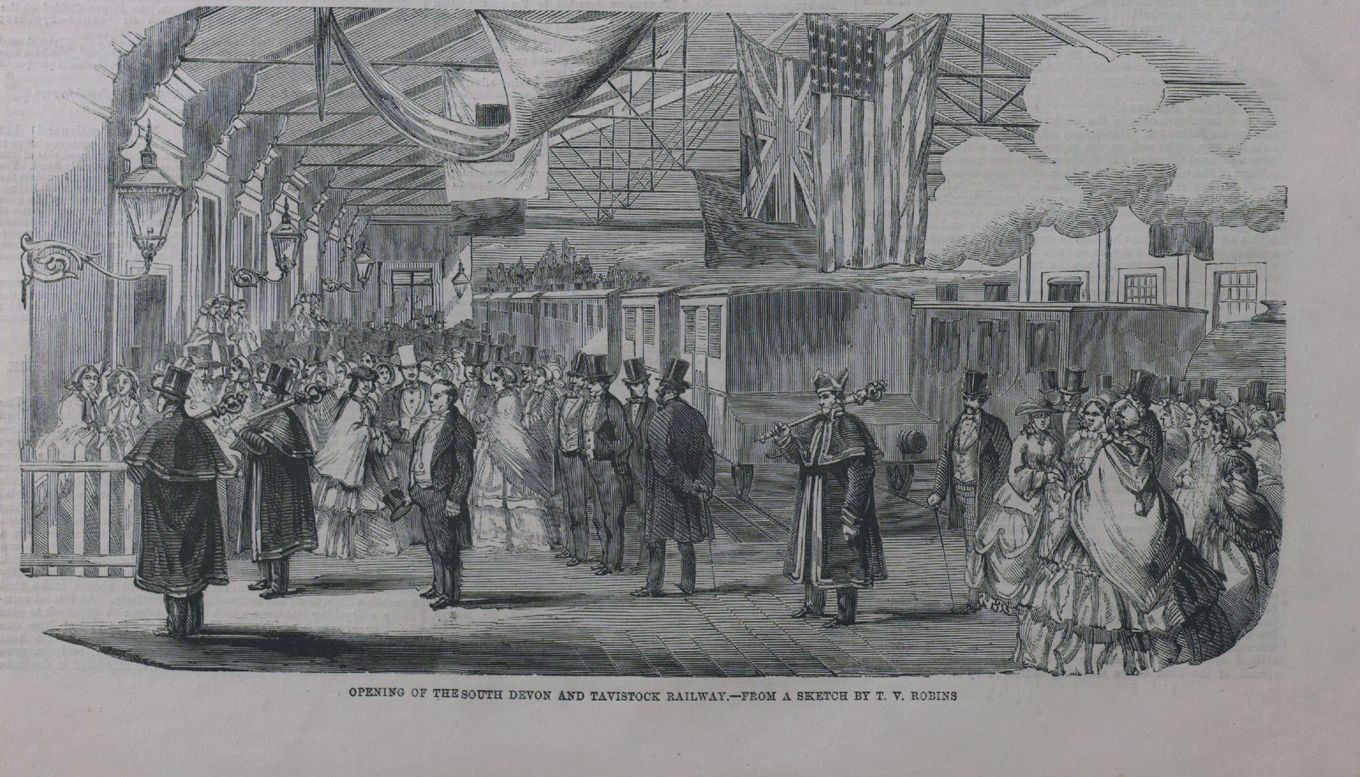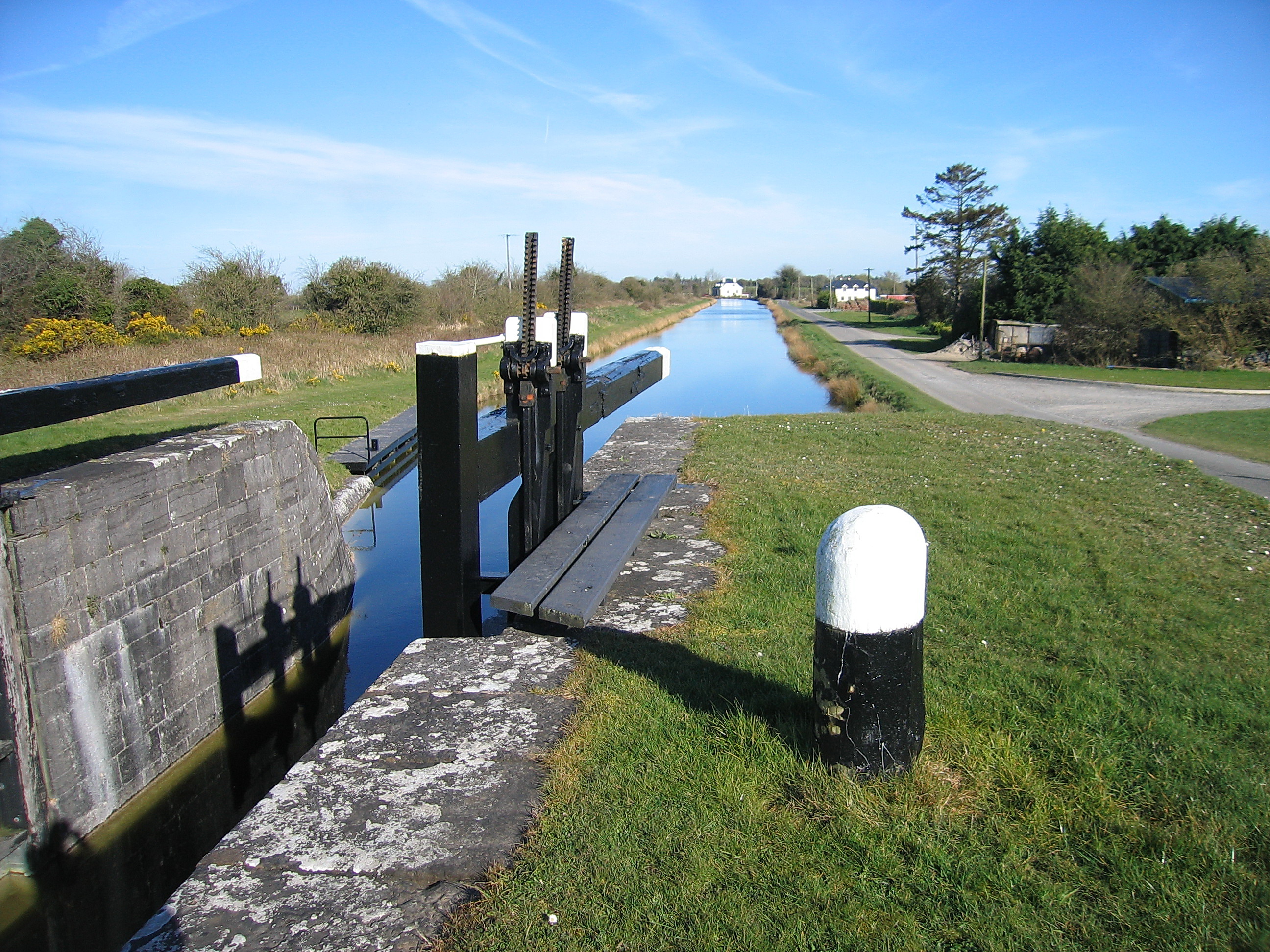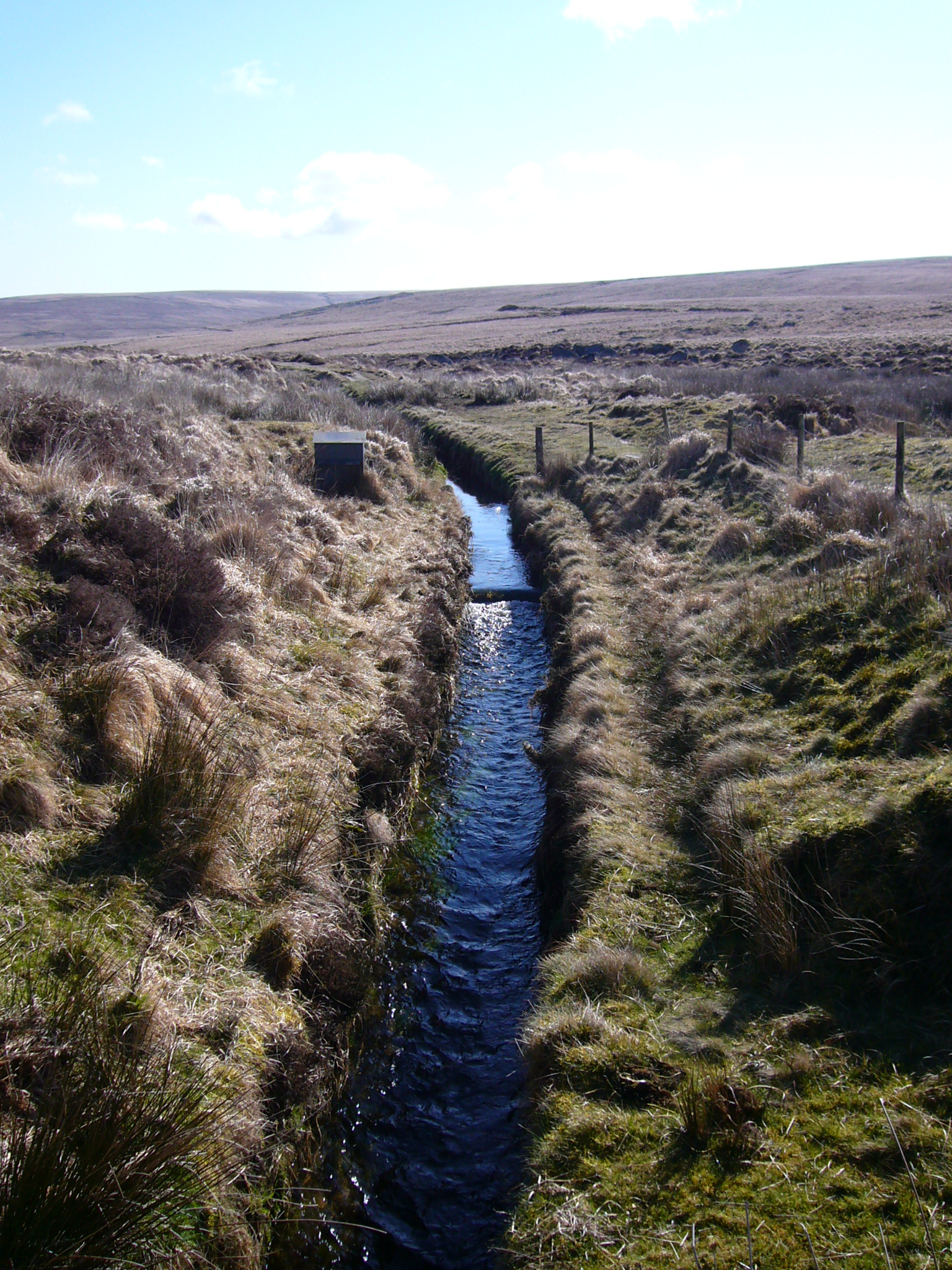|
Cann Quarry Canal
The Cann Quarry canal was a canal in Devon, England which ran for just under from Cann Quarry to the River Plym at Marsh Mills. It opened in 1829, and a short tramway connected it to the Plymouth and Dartmoor Railway at Crabtree Junction. It had been replaced by a tramway within ten years, but continued to be used as a mill leat to supply Marsh Mills corn mill, and most of it is still visible. History In 1778, the Cann Slate Quarry was owned by John Parker, and in order to make transport of the slate easier, he asked the engineer John Smeaton to survey a canal, to run from the quarry to the bridge at Marsh Mills. The River Plym between the bridge and Plymouth was navigable by barges. Although Smeaton carried out the work, he concluded that the canal, which would be long and would need several locks to accommodate the drop of in level, was unlikely to be economic, since the only trade would be the output from the quarry. He therefore suggested that a tramway would be a better ... [...More Info...] [...Related Items...] OR: [Wikipedia] [Google] [Baidu] |
Canal
Canals or artificial waterways are waterways or engineered channels built for drainage management (e.g. flood control and irrigation) or for conveyancing water transport vehicles (e.g. water taxi). They carry free, calm surface flow under atmospheric pressure, and can be thought of as artificial rivers. In most cases, a canal has a series of dams and locks that create reservoirs of low speed current flow. These reservoirs are referred to as ''slack water levels'', often just called ''levels''. A canal can be called a ''navigation canal'' when it parallels a natural river and shares part of the latter's discharges and drainage basin, and leverages its resources by building dams and locks to increase and lengthen its stretches of slack water levels while staying in its valley. A canal can cut across a drainage divide atop a ridge, generally requiring an external water source above the highest elevation. The best-known example of such a canal is the Panama Canal. Many ... [...More Info...] [...Related Items...] OR: [Wikipedia] [Google] [Baidu] |
South Devon And Tavistock Railway
The South Devon and Tavistock Railway linked Plymouth with Tavistock in Devon; it opened in 1859. It was extended by the Launceston and South Devon Railway to Launceston, in Cornwall in 1865. It was a broad gauge line but from 1876 also carried the standard gauge (then referred to as ''narrow gauge'') trains of the London and South Western Railway between Lydford and Plymouth: a third rail was provided, making a ''mixed gauge''. In 1892 the whole line was converted to standard gauge only. The line closed to passengers in 1962 although sections at either end were retained for a while to carry freight traffic. A short section has since been reopened as a preserved line by the Plym Valley Railway. History Getting the Tavistock line authorised The Plymouth and Dartmoor Railway, a horse-worked line, had been constructed to bring minerals from quarries near Princetown to Plymouth; it opened on 26 September 1823. The South Devon Railway (SDR) built its line from Exeter to Plymouth, o ... [...More Info...] [...Related Items...] OR: [Wikipedia] [Google] [Baidu] |
Canals In Devon
Canals or artificial waterways are waterways or engineered channels built for drainage management (e.g. flood control and irrigation) or for conveyancing water transport vehicles (e.g. water taxi). They carry free, calm surface flow under atmospheric pressure, and can be thought of as artificial rivers. In most cases, a canal has a series of dams and locks that create reservoirs of low speed current flow. These reservoirs are referred to as ''slack water levels'', often just called ''levels''. A canal can be called a ''navigation canal'' when it parallels a natural river and shares part of the latter's discharges and drainage basin, and leverages its resources by building dams and locks to increase and lengthen its stretches of slack water levels while staying in its valley. A canal can cut across a drainage divide atop a ridge, generally requiring an external water source above the highest elevation. The best-known example of such a canal is the Panama Canal. Many ... [...More Info...] [...Related Items...] OR: [Wikipedia] [Google] [Baidu] |
History Of The British Canal System
History (derived ) is the systematic study and the documentation of the human activity. The time period of event before the invention of writing systems is considered prehistory. "History" is an umbrella term comprising past events as well as the memory, discovery, collection, organization, presentation, and interpretation of these events. Historians seek knowledge of the past using historical sources such as written documents, oral accounts, art and material artifacts, and ecological markers. History is not complete and still has debatable mysteries. History is also an academic discipline which uses narrative to describe, examine, question, and analyze past events, and investigate their patterns of cause and effect. Historians often debate which narrative best explains an event, as well as the significance of different causes and effects. Historians also debate the nature of history as an end in itself, as well as its usefulness to give perspective on the problems of the p ... [...More Info...] [...Related Items...] OR: [Wikipedia] [Google] [Baidu] |
Canals Of The United Kingdom
The canals of the United Kingdom are a major part of the network of inland waterways in the United Kingdom. They have a varied history, from use for irrigation and transport, through becoming the focus of the Industrial Revolution, to today's role of recreational boating. Despite a period of abandonment, today the canal system in the United Kingdom is again increasing in use, with abandoned and derelict canals being reopened, and the construction of some new routes. Canals in England and Wales are maintained by navigation authorities. The biggest navigation authorities are the Canal & River Trust and the Environment Agency, but other canals are managed by companies, local authorities or charitable trusts. The majority of canals in the United Kingdom can accommodate boats with a length of between and are now used primarily for leisure. There are a number of canals which are far larger than this, including New Junction Canal and the Gloucester and Sharpness Canal, which can acc ... [...More Info...] [...Related Items...] OR: [Wikipedia] [Google] [Baidu] |
Yelverton, Devon
Yelverton is a large village on the south-western edge of Dartmoor, Devon, in England. When Yelverton railway station (on the Great Western Railway (GWR) line from Plymouth to Tavistock) opened in the 19th century, the village became a popular residence for Plymouth commuters. The railway is now closed, but the Plym Valley Railway has reopened a section of it. Yelverton is well known for Roborough Rock - a prominent mass of stone close to the Plymouth road on the fringe of nearby Roborough Down, near the southern end of the airfield. It gave its name to the Rock Hotel, built as a farm during the Elizabethan period, but converted in the 1850s to cater for growing tourism in the area. The area to the south and west of the roundabout at the centre of the village was settled in late Victorian and Edwardian times, with many grand and opulent villas. An area developed at about the same time on an odd shaped piece of land to the south of the Tavistock road is known as Leg o' M ... [...More Info...] [...Related Items...] OR: [Wikipedia] [Google] [Baidu] |
Plym Valley Railway
The Plym Valley Railway is a heritage railway based on part of the now-closed South Devon and Tavistock Railway, a branch line of the Great Western Railway in Devon, England. History The line was originally part of the South Devon and Tavistock Railway, a broad gauge railway linking Plymouth with Tavistock in Devon, England. This opened in 1859, was converted to in 1892 and closed in 1962. Local enthusiasts set up a group in 1982 to restore part of the line as the Plym Valley Railway. The first section re-opened in May 2008 when trains could operate over of track as far as Lee Moor crossing, the site where the gauge Lee Moor Tramway (now the West Devon Way cycle path) used to cross the line on the level. A new station was constructed just north of the site of the original Marsh Mills railway station as that site is occupied by a line that serves the Marsh Mills china clay Kaolinite ( ) is a clay mineral, with the chemical composition Al2 Si2 O5( OH)4. It ... [...More Info...] [...Related Items...] OR: [Wikipedia] [Google] [Baidu] |
West Devon Way
The West Devon Way is a waymarked long-distance footpath in South West England in the United Kingdom. The West Devon Way runs for 58 km (36 mi). Route The route runs from the western fringes of Dartmoor National Park moorland country then through Okehampton and Tavistock, Devon south towards Plymouth through gentler Devon countryside. It links with the Tarka Trail The Tarka Trail is a series of footpaths and cyclepaths (rail trails) around north Devon, England that follow the route taken by the fictional Tarka the Otter in the book of that name. It covers a total of in a figure-of-eight route, centred o ... into North Devon. It also links with the Dartmoor Way and the Two Castles Trail. External links {{commonscatDevon County Council info on the route and travel in the area [...More Info...] [...Related Items...] OR: [Wikipedia] [Google] [Baidu] |
A38 Road
The A38, parts of which are known as Devon Expressway, Bristol Road and Gloucester Road, Bristol, Gloucester Road, is a major A-class trunk road in England. The road runs from Bodmin in Cornwall to Mansfield in Nottinghamshire. It is long, making it the longest two-digit A road in England. It was formerly known as the ''Leeds–Exeter Trunk Road'', when this description also included the A61 road (Great Britain), A61. Before the opening of the M5 motorway in the 1960s and 1970s, the A38 formed the main "holiday route" from the Midlands to Somerset, Devon and Cornwall. Considerable lengths of the road in the West Midlands (region), West Midlands closely follow Roman roads, including part of Icknield Street. Between Worcester, England, Worcester and Birmingham the current A38 follows the line of a Saxon salt road; For most of the length of the M5 motorway, the A38 road runs alongside it as a single carriageway road. Route description Bodmin to Birmingham The road starts on t ... [...More Info...] [...Related Items...] OR: [Wikipedia] [Google] [Baidu] |
Cann Quarry Canal Towpath After Rain - Plymbridge , a city in France
{{disambiguation ...
Cann may refer to: *Cann (surname), a list of people with the name *Cann River, a river of Victoria, Australia *Cann, Dorset, a village in England *Edward du Cann, British businessman and politician *Claire and Antoinette Cann pianists, known as the Cann Twins *Cann baronets, a former baronetcy See also * Cann Hall, a district of the London Borough of Waltham Forest * McCann (other) * Kann (other) * Can (other) * Canne (other) * Cannes Cannes ( , , ; oc, Canas) is a city located on the French Riviera. It is a communes of France, commune located in the Alpes-Maritimes departments of France, department, and host city of the annual Cannes Film Festival, Midem, and Cannes Lions I ... [...More Info...] [...Related Items...] OR: [Wikipedia] [Google] [Baidu] |
Mill Leat
A leat (; also lete or leet, or millstream) is the name, common in the south and west of England and in Wales, for an artificial watercourse or Aqueduct (watercourse), aqueduct dug into the ground, especially one supplying water to a watermill or its mill pond. Other common uses for leats include delivery of water for hydraulic mining and Buddle pit, mineral concentration, for irrigation, to serve a Dyeing, dye works or other industrial plant, and provision of drinking water to a farm or household or as a catchment cut-off to improve the yield of a reservoir. According to the ''Oxford English Dictionary'', ''leat'' is cognate with ''let'' in the sense of "allow to pass through". Other names for the same thing include ''fleam'' (probably a leat supplying water to a mill that did not have a millpool). In parts of northern England, for example around Sheffield, the equivalent word is ''goit''. In southern England, a leat used to supply water for water-meadow irrigation is often cal ... [...More Info...] [...Related Items...] OR: [Wikipedia] [Google] [Baidu] |
Devon
Devon ( , historically known as Devonshire , ) is a ceremonial and non-metropolitan county in South West England. The most populous settlement in Devon is the city of Plymouth, followed by Devon's county town, the city of Exeter. Devon is a coastal county with cliffs and sandy beaches. Home to the largest open space in southern England, Dartmoor (), the county is predominately rural and has a relatively low population density for an English county. The county is bordered by Somerset to the north east, Dorset to the east, and Cornwall to the west. The county is split into the non-metropolitan districts of East Devon, Mid Devon, North Devon, South Hams, Teignbridge, Torridge, West Devon, Exeter, and the unitary authority areas of Plymouth, and Torbay. Combined as a ceremonial county, Devon's area is and its population is about 1.2 million. Devon derives its name from Dumnonia (the shift from ''m'' to ''v'' is a typical Celtic consonant shift). During the Briti ... [...More Info...] [...Related Items...] OR: [Wikipedia] [Google] [Baidu] |




.jpg)



